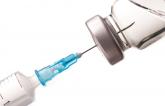News

Zoledronate maintains bone loss after denosumab discontinuation
- Author:
- Nicola Garrett
The results suggest that, after achieving nonosteoporotic BMD with denosumab, a single intravenous infusion of zoledronate given 6 months after...
News

International lupus community sets out top barriers to improving lupus outcomes
- Author:
- Nicola Garrett
The consensus report is part of an ongoing process of identifying, prioritizing, and implementing strategies to address the most pressing...
News
Machine-learning model predicts anti-TNF nonresponse in RA patients
- Author:
- Nicola Garrett
The model could be used to “help up to 40% of European-descent anti-TNF nonresponders avoid ineffective treatments.”
News

Almost half of sudden cardiac deaths linked to prior silent MI
- Author:
- Nicola Garrett
Almost half of individuals who died of sudden cardiac death had a myocardial scar at autopsy, indicating a prior silent MI.
News

Hyponatremia is a potential and serious complication of prolonged labor
- Author:
- Nicola Garrett
Women presenting at hospital after attempted home births or after prolonged labor at hospital are at risk.
News

Lupus pregnancy outcomes show marked improvement in past 20 years
- Author:
- Nicola Garrett
Pregnancy management and outcomes have improved markedly for women with SLE over the past 2 decades but there’s still progress to be made,...
News
More cognitive rigidity found in patients with depression plus fibromyalgia
- Author:
- Nicola Garrett
More attention might need to be paid to the role of chronic pain in the study and treatment of depressed patients, researchers suggest.
News

Upadacitinib monotherapy appears promising in RA patients with inadequate methotrexate response
- Author:
- Nicola Garrett
The investigational oral Janus kinase (JAK) inhibitor upadacitinib has shown promise as a monotherapy treatment option for patients with active...
News

Flu shot can be given irrespective of the time of last methotrexate dose
- Author:
- Nicola Garrett
New finding stems from post hoc analysis of a randomized, controlled trial.
News

TNF inhibitor prices rose despite increased drug class competition
- Author:
- Nicola Garrett
Estimated treatments costs for etanercept, infliximab, and adalimumab would have been 40%-45% lower without new competition, a new analysis finds...
News

List of medications linked to drug-induced lupus expands
- Author:
- Nicola Garrett
A new data-mining study adds 42 new drugs.
News

Criteria-based fibromyalgia diagnosis and rheumatologists’ clinical diagnosis often disagree
- Author:
- Nicola Garrett
New research reveals considerable disparity between rheumatologists’ clinical diagnosis of fibromyalgia and fibromyalgia criteria based diagnosis...
News

Compounded pain creams no better than placebo creams in localized chronic pain
- Author:
- Nicola Garrett
At 1 month, creams specifically formulated for neuropathic, nociceptive, or mixed pain had no effect beyond placebo.
News
Topical retinoid found effective as microneedling for acne scars
- Author:
- Nicola Garrett
Tazarotene gel 0.1% could be an effective and practical home-based treatment of atrophic postacne scarring.
News
Symptomatic hyperuricemia may respond to urate-lowering therapy
- Author:
- Nicola Garrett
Small case-control study serves as “potential rationale” for reclassifying the ACR/EULAR 2015 gout classification criteria, researchers said.
